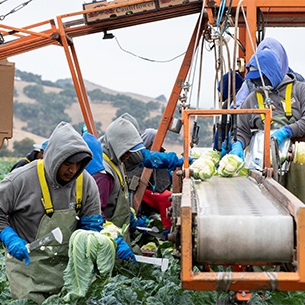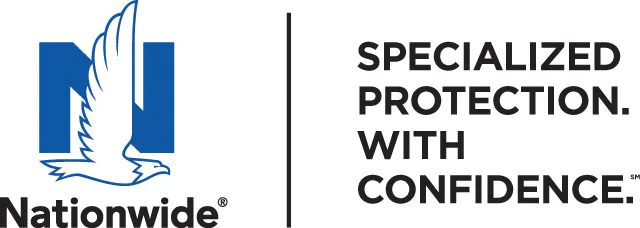Managing workplace safety in diverse and inclusive settings
KEY HIGHLIGHTS
- Immigrants are expected to make up roughly 23% of working-age adults in the United States by 2050
- Latino immigrants to the United States have a workplace fatality rate of 5.9 per 100,000 — nearly 50% higher than the rate for all other workers in the nation
- The Occupational Safety and Health Administration estimates that language barriers are a contributing factor in 25% of job-related accidents
The growing diverse and inclusive workforce
 Like the country itself, the U.S. workforce is becoming more diverse and continues to be composed of employees from a variety of cultural backgrounds. One study from the Pew Research Center estimates that immigrants will make up roughly 23% of working-age adults in the United States by 2050.1 The majority of these workers are expected to come from Latin America, and by 2050, the U.S. could have the highest number of Spanish speakers in the world.2
Like the country itself, the U.S. workforce is becoming more diverse and continues to be composed of employees from a variety of cultural backgrounds. One study from the Pew Research Center estimates that immigrants will make up roughly 23% of working-age adults in the United States by 2050.1 The majority of these workers are expected to come from Latin America, and by 2050, the U.S. could have the highest number of Spanish speakers in the world.2
For businesses, a multilingual workplace can have several unique benefits. For one, attracting and retaining candidates who speak different languages is a smart growth strategy for global-minded organizations. This is especially important for organizations in the manufacturing industry, which continues to be a cornerstone of the U.S. economy and is likely to see continued growth.
Additionally, tapping into a more diverse pool of candidates can help with recruiting practices, which is especially important given labor shortages. According to the U.S. Department of Labor, there were 7.6 million unfilled jobs in the United States as of January 2019.3 It’s estimated that, between now and 2050, immigrants from all regions of the globe will make up 83% of the growth in the working-age population of the United States.4 Businesses that don’t take advantage of this growing pipeline of candidates may struggle to fill open positions.
However, managing a multilingual workforce isn’t without its share of challenges — particularly when it comes to workplace safety. This article will examine workplace safety issues related to multilingual workforces and highlight best practices that businesses should consider to help them better manage a diverse employee base.
Workplace safety concerns in diverse settings
Providing clear and concise communication around safety policies and procedures is not only recommended, it’s essential to maintaining a safe workplace. However, when a diverse, multilingual workforce is involved, effectively communicating safety information can be difficult.
When arriving in the United States, many immigrants take jobs in unfamiliar industries. These industries are often safety-sensitive (e.g., manufacturing or construction), necessitating clear and concise workplace safety training. However, immigrant workers frequently report not receiving any safety training on the job. Even when they do, training can be of poor quality, particularly if employers overlook cultural and language differences.5
In a multilingual workplace, language and cultural barriers can contribute to miscommunication as well as on-the-job accidents and injuries. This is apparent when you consider that Latino immigrants to the United States have a workplace fatality rate of 5.9 per 100,000 — nearly 50% higher than the rate for all workers in the nation.6 Furthermore, the Occupational Safety and Health Administration (OSHA) estimates that language barriers are a contributing factor in 25% of job-related accidents.7
Employees who don’t speak English may hesitate to ask for help when they are confused about safety communication. Even if an employee has strong conversational English skills, specialized terminology around safety hazards (e.g., chemical, machinery or biological hazards) may not have an obvious equivalent in other languages.8
Put another way, key information on workplace health and safety provided in safety meetings and written instructions may get lost in translation. This opens businesses up to a slew of health and wellness exposures, which could lead to injuries, deaths, fines and litigation.
Safeguarding multilingual workforces
Every employer with a multilingual workforce should take steps to bridge cultural gaps and ensure workplace safety. While there isn’t a one-size-fits-all approach, the following best practices can help businesses of all sizes address the challenges of managing a diverse and inclusive workforce.
Cultural diversity in the workplace – key things to consider
Too often, employers address only language differences in the workplace, neglecting cultural ones. This is an important consideration, as a worker’s cultural background can impact a number of workplace dynamics, including the way the employee:
-
- Perceives work in general
- Adapts to workplace hazards
- Approaches relationships with co-workers and supervisors
As an example, one study of Latino immigrant employees by Dr. Ruth Gomberg-Muñoz, a professor of anthropology at Loyola University Chicago, found that — based on their culture — the workers placed a high value on productivity. To gain favor with their supervisors, these workers made overt demonstrations of their hard work.9 In this example, the employees’ culture could promote a positive and competitive working environment. However, over time, this hardworking attitude could also lead to an increased risk of injuries.
To ensure workplace safety and avoid any gaps in training, both supervisors and HR representatives need to understand the cultural norms of their workers. Doing so can inform decisions regarding training, including how it’s communicated to workers who don’t speak English as a first language.
Have bilingual employees help with training
To help with training, employers may want to enlist the help of several bilingual employees to serve on a safety committee. These individuals can provide translation assistance, explain cultural differences and act as representatives for any questions and concerns the multilingual workforce may have for management.
This ensures that employers are giving training in their employee’s native language whenever possible. When doing so, it’s important to remember that — even if a worker speaks English — not every word will have a direct translation. That’s where providing hands-on training can help.
Specifically, businesses should consider recruiting well-trained, bilingual employees to formally train a multilingual workforce in one-on-one or small-group environments. Direct demonstrations of safety protocols can help improve employee understanding and may help employees feel more comfortable asking questions.
To supplement internal training procedures, many employers pay to have their policies and safety materials professionally translated. If an employer outsources the translation of safety information, they should ensure that a native speaker reviews it for accuracy and clarity.
Provide workplace safety signage in multiple languages
Because it can be difficult to secure workplace safety signage in languages other than English and Spanish, employers often stop short of securing properly translated signage. This can create numerous risk management gaps and create potential injury exposures. By providing common safety, procedural and policy signage in multiple languages, employers can increase their workforce’s understanding of important, everyday issues.
One key factor is that properly translated signage promotes a fast response to safety hazards. In the event of a fire or other pressing safety hazard, employees depend on well-placed signage to inform their response efforts. In these emergency situations, every second counts. As such, employers must reduce the likelihood that an employee has to take additional time to read and comprehend signage.10
Additionally, the proper signage can help employees feel more included. For non-English-speaking employees, a new workplace can often be an intimidating place, particularly if they have a limited understanding of English. To help these employees feel more welcome, it’s crucial for employers to include signage in the worker’s native language. Having signage in a language they understand may also help them feel more comfortable and capable in their everyday tasks.11
When securing signage in the language of their workforce, employers should use a trusted and credible vendor. For employers with Spanish-speaking employees, OSHA can be a good place to start.
Offer language classes
To help manage their multilingual workforce, many businesses are beginning to offer English as a second language (ESL) courses.12 Through these courses, a business’s multilingual workforce can gain a better understanding of the English language, which in turn could make safety training courses more effective.
Conversely, ensuring that supervisors and HR professionals have a basic knowledge of the languages used in the workplace can promote a positive and safe working environment. Often, it’s supervisors who are providing training on workplace safety. If these individuals can’t communicate with their employees in some capacity, workers may miss out on critical information regarding policies and procedures. Furthermore, language barriers can hinder the employee-supervisor relationship, which can make training even more difficult.
Continued workplace safety
When it comes to managing a multilingual workforce, every business is different and will have its own set of unique needs to keep in mind. Still, to address safety and other issues, employers — and the insurance agents who advise them — need to have a sense of the greatest exposures related to managing multilingual workers.
Employers must have a grasp on the cultural and language barriers that prevent employees from getting the tools they need to stay safe on the job. With that understanding, it’s simply a matter of securing the right resources and executing a top-down approach to safeguarding multilingual workers.
KEY TAKEAWAYS
- Like the country itself, the U.S. workforce is becoming more diverse and continues to be composed of employees from a variety of cultural backgrounds
- Attracting and retaining candidates who speak different languages is a smart growth strategy for global-minded organizations
- However, managing a multilingual workforce isn’t without its share of challenges, particularly when it comes to workplace safety

